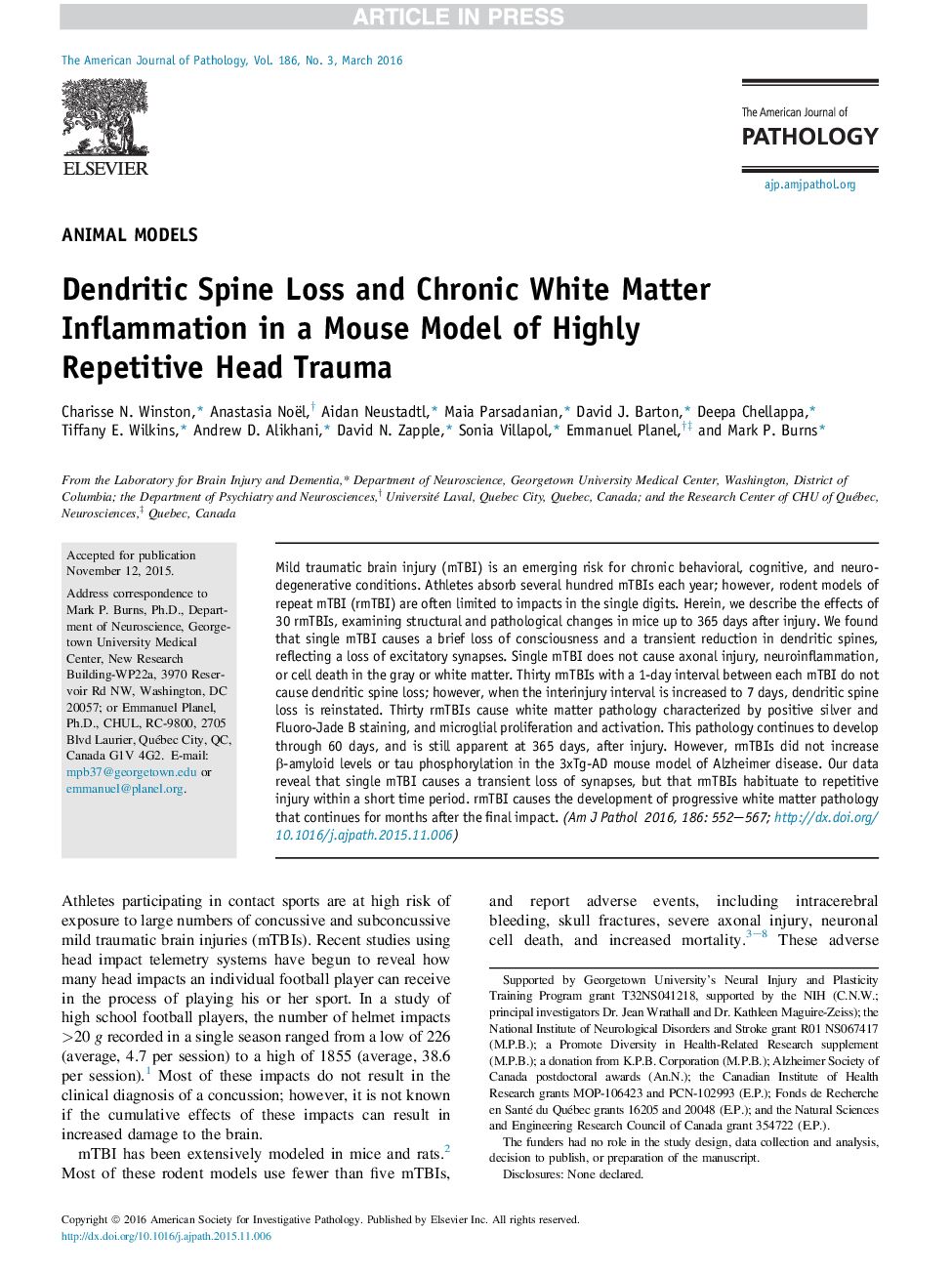| Article ID | Journal | Published Year | Pages | File Type |
|---|---|---|---|---|
| 5932254 | The American Journal of Pathology | 2016 | 16 Pages |
Abstract
Mild traumatic brain injury (mTBI) is an emerging risk for chronic behavioral, cognitive, and neurodegenerative conditions. Athletes absorb several hundred mTBIs each year; however, rodent models of repeat mTBI (rmTBI) are often limited to impacts in the single digits. Herein, we describe the effects of 30 rmTBIs, examining structural and pathological changes in mice up to 365 days after injury. We found that single mTBI causes a brief loss of consciousness and a transient reduction in dendritic spines, reflecting a loss of excitatory synapses. Single mTBI does not cause axonal injury, neuroinflammation, or cell death in the gray or white matter. Thirty rmTBIs with a 1-day interval between each mTBI do not cause dendritic spine loss; however, when the interinjury interval is increased to 7 days, dendritic spine loss is reinstated. Thirty rmTBIs cause white matter pathology characterized by positive silver and Fluoro-Jade B staining, and microglial proliferation and activation. This pathology continues to develop through 60 days, and is still apparent at 365 days, after injury. However, rmTBIs did not increase β-amyloid levels or tau phosphorylation in the 3xTg-AD mouse model of Alzheimer disease. Our data reveal that single mTBI causes a transient loss of synapses, but that rmTBIs habituate to repetitive injury within a short time period. rmTBI causes the development of progressive white matter pathology that continues for months after the final impact.
Related Topics
Health Sciences
Medicine and Dentistry
Cardiology and Cardiovascular Medicine
Authors
Charisse N. Winston, Anastasia Noël, Aidan Neustadtl, Maia Parsadanian, David J. Barton, Deepa Chellappa, Tiffany E. Wilkins, Andrew D. Alikhani, David N. Zapple, Sonia Villapol, Emmanuel Planel, Mark P. Burns,
